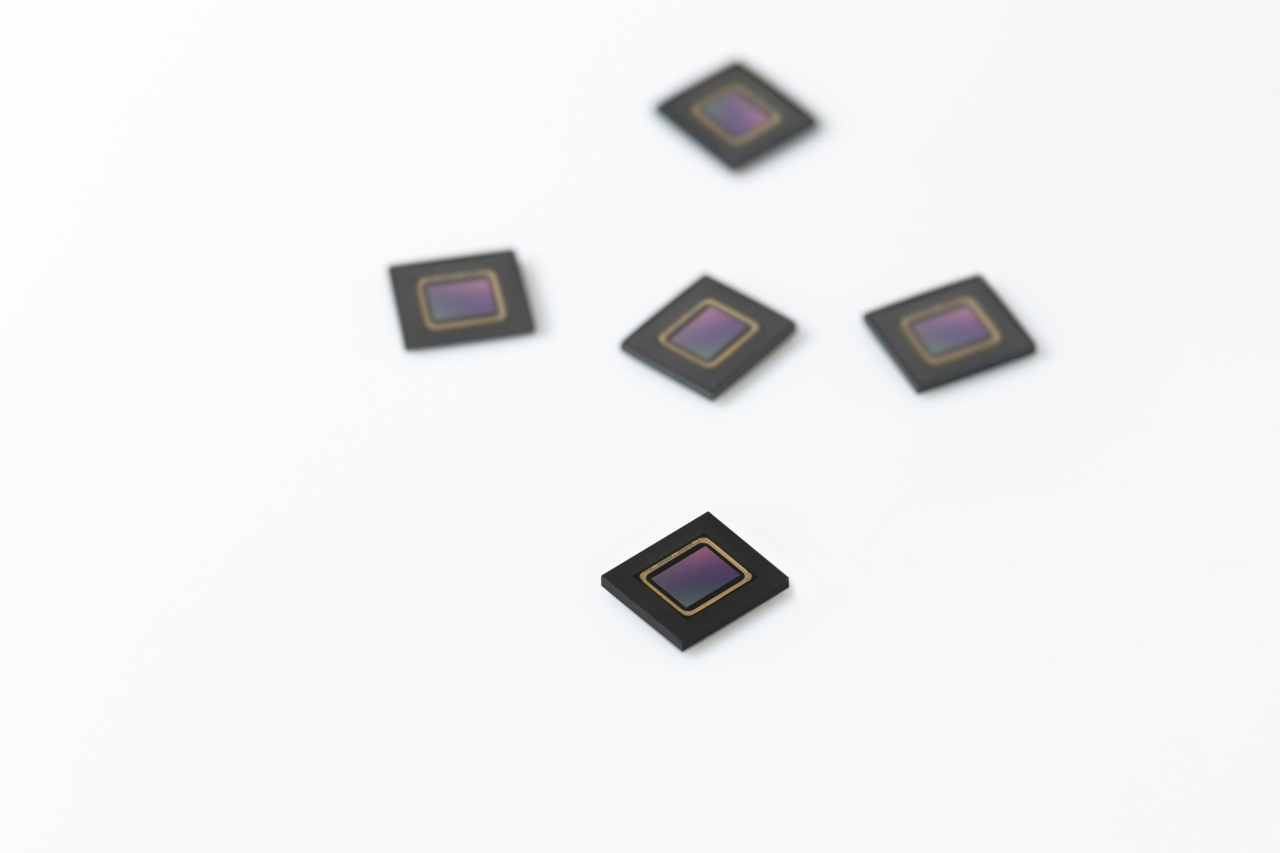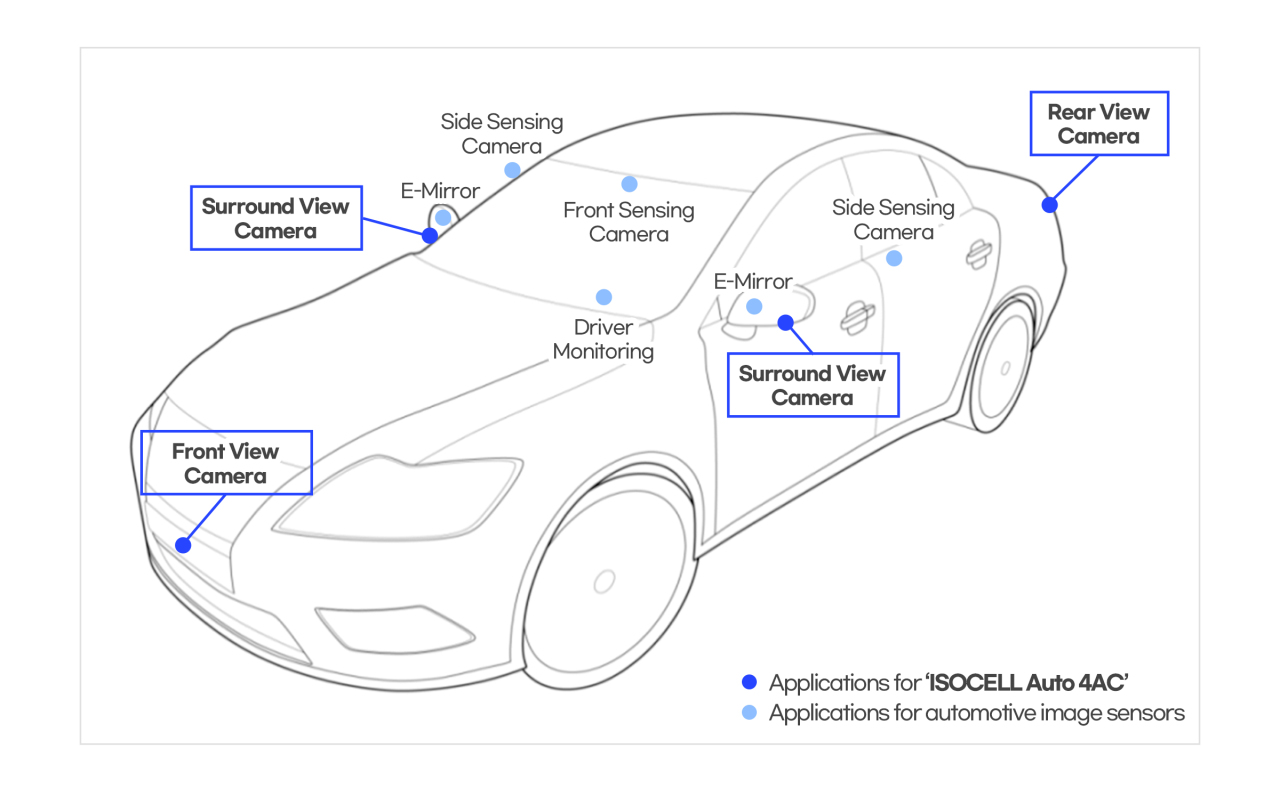Samsung makes push into automotive image sensor market
By Song Su-hyunPublished : July 13, 2021 - 14:40

Samsung Electronics on Tuesday announced the launch of a new image sensor for automobiles, taking aim at a market segment controlled by Japanese rival Sony.
The new Isocell Auto 4AC will be supplied to a global car brand this year, it said.
“Starting with the Isocell Auto 4AC, we plan to expand our automotive sensor lineup to areas such as camera monitor systems, autonomous driving and in-cabin monitoring,” said Chang Duck-hyun, the executive vice president of Samsung’s sensor business.
Isocell is Samsung’s image sensor brand that was first launched in 2013. It features Samsung’s proprietary technology that reduces color crosstalk between pixels by placing a physical barrier, allowing small-sized pixels to achieve higher color fidelity.
The market for image sensors, a type of semiconductor that converts lights into digital signals used in high-spec devices, smartphones and cars, has been growing. Sony controls around 45 percent of the global market, with Samsung being a distant runner-up with a 19.8 percent share.
In trying to chip away at Sony’s overall image sensor market share, Samsung appears to be focusing on the automobile segment, which is expected to grow around 11 percent each year in line with autonomous driving technologies by 2024.
The latest Isocell Auto 4AC is a sensor for viewing cameras in cars, particularly for surround-view monitors and rear-view cameras. It has 1.2 million pixels in a 1/3.7-inch optical format with an image signal processor embedded.

The new chipset features Samsung’s CornerPixel technology that offers a safer driving experience with an enhanced view for the driver.
This technology has a specialized pixel structure that mitigates LED lights over 90 hertz. Within a single pixel area, it embeds two photodiodes, one 3.0 micrometer pixel for viewing low-light images, and a 1.0 micrometer pixel placed at the corner of the big pixel for brighter environments.
With two photodiodes capturing images in different exposures simultaneously, the sensor offers up to 120 db in high dynamic range with minimal motion blur, allowing smoother transitions between dark and bright areas while preserving more details of the road ahead.
The sensor could prevent difficulties in driving in various lighting situations on the road, the company said, including a quick transition from a low-lit environment to a brighter one, such as exiting a tunnel.
It can also ease flickering from LED headlamps or road signage or traffic lights to help enable drivers to recognize traffic information more accurately.
The 4AC meets stringent stress test qualifications, with the chipset able to operate in conditions with temperatures between minus 40 degrees Celsius to 125 degrees Celsius.








![[Graphic News] More Koreans say they plan long-distance trips this year](http://res.heraldm.com/phpwas/restmb_idxmake.php?idx=644&simg=/content/image/2024/04/17/20240417050828_0.gif&u=)
![[KH Explains] Hyundai's full hybrid edge to pay off amid slow transition to pure EVs](http://res.heraldm.com/phpwas/restmb_idxmake.php?idx=644&simg=/content/image/2024/04/18/20240418050645_0.jpg&u=20240419100350)





![[From the Scene] Monks, Buddhists hail return of remains of Buddhas](http://res.heraldm.com/phpwas/restmb_idxmake.php?idx=652&simg=/content/image/2024/04/19/20240419050617_0.jpg&u=20240419175937)

![[KH Explains] Hyundai's full hybrid edge to pay off amid slow transition to pure EVs](http://res.heraldm.com/phpwas/restmb_idxmake.php?idx=652&simg=/content/image/2024/04/18/20240418050645_0.jpg&u=20240419100350)

![[Today’s K-pop] Illit drops debut single remix](http://res.heraldm.com/phpwas/restmb_idxmake.php?idx=642&simg=/content/image/2024/04/19/20240419050612_0.jpg&u=)